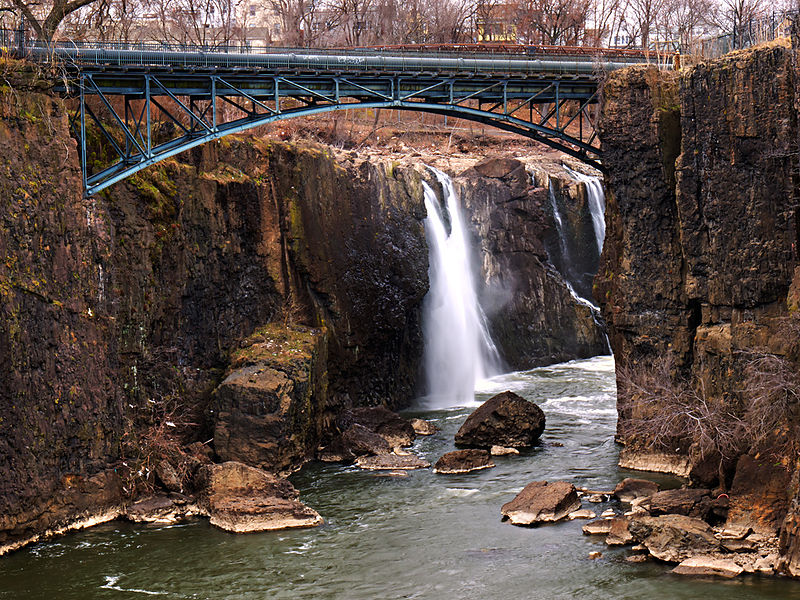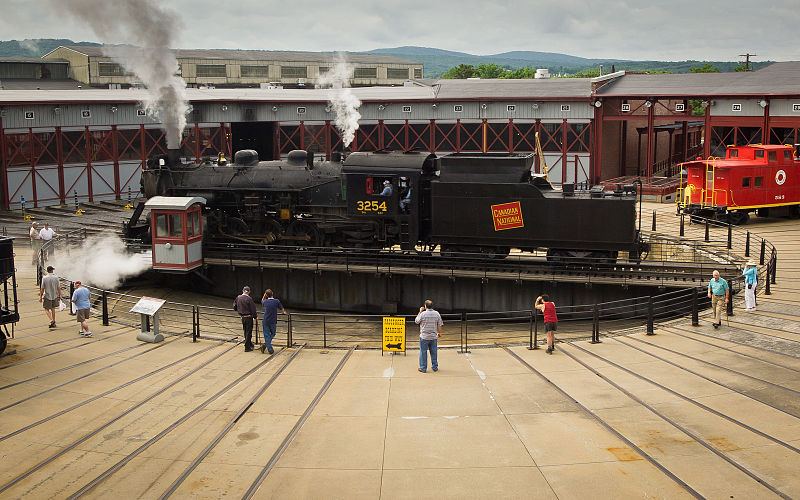The United States has 401 national parks, which are visited by over 275 million people every year. As the National Park Service (NPS) approaches its centennial anniversary in 2016, the agency is reevaluating how parks are used and maintained, Arch Daily reports.
To this end, NPS has joined with the Van Alen Institute and created the National Parks Now competition. This competition fits into the Institute's existing initiative, Elsewhere: Escape and the Urban Landscape, to investigate how built environments create a need for escape. The National Parks Now competition seeks to make parks relevant for a wider audience, especially smaller national parks near urban areas.
Four parks in the Northeast have been chosen as case studies for the competition:
- Sagamore Hill National Historic Site (Oyster Bay, NY) – President Theodore Roosevelt’s estate
- Steamtown National Historic Site (Scranton, PA) – a monument to the steam locomotive
- Paterson Great Falls National Historic Park (Paterson, NJ) – birthplace of American textile manufacturing
- Weir Farm National Historic Site (Ridgefield, CT) – summer estate of artist Julien Alden Weir
National Parks Now asks entrants to propose all types of interventions for these parks, including interactive installations, site-specific education and leisure opportunities, outreach and engagement campaigns, and self-led tours. Any ideas to expand the park-going public, especially those that can be used as a model for other parks, are welcome.
The competition is open to architects, designers, historians, communications professionals, and others.
After an initial phase of competition, four teams, one for each park site, will be selected to participate in a six-month, collaborative research and design process, and will receive $15,000.
A winning team will be chosen after this period and a prototype of their work will be implemented at their site in 2015. See more about the competition here.
Related Stories
Designers | Oct 1, 2024
Global entertainment design firm WATG acquires SOSH Architects
Entertainment design firm WATG has acquired SOSH Architects, an interior design and planning firm based in Atlantic City, N.J.
Higher Education | Sep 30, 2024
Studio Gang turns tobacco warehouse into the new home of the University of Kentucky’s College of Design
Studio Gang has completed the Gray Design Building, the new home of the University of Kentucky’s College of Design. In partnership with K. Norman Berry Associates Architects, Studio Gang has turned a former tobacco warehouse into a contemporary facility for interdisciplinary learning and collaboration.
Warehouses | Sep 27, 2024
California bill would limit where distribution centers can be built
A bill that passed the California legislature would limit where distribution centers can be located and impose other rules aimed at reducing air pollution and traffic. Assembly Bill 98 would tighten building standards for new warehouses and ban heavy diesel truck traffic next to sensitive sites including homes, schools, parks and nursing homes.
Laboratories | Sep 27, 2024
Traditional lab design doesn't address neurodiverse needs, study finds
A study conducted by ARC, HOK, and the University of the West of Scotland, has revealed that half (48.1%) of all survey respondents who work in laboratory settings identify as neurodivergent.
Laboratories | Sep 26, 2024
BSL conversions: A cost-efficient method to support high-containment research
Some institutions are creating flexible lab spaces that can operate at a BSL-2 and modulate up to a BSL-3 when the need arises. Here are key aspects to consider when accommodating a rapid modulation between BSL-2 and BSL-3 space.
MFPRO+ News | Sep 24, 2024
Major Massachusetts housing law aims to build or save 65,000 multifamily and single-family homes
Massachusetts Gov. Maura Healey recently signed far-reaching legislation to boost housing production and address the high cost of housing in the Bay State. The Affordable Homes Act aims to build or save 65,000 homes through $5.1 billion in spending and 49 policy initiatives.
Designers | Sep 20, 2024
The growing moral responsibility of designing for shade
Elliot Glassman, AIA, NCARB, LEED AP BD+C, CPHD, Building Performance Leader, CannonDesign, makes the argument for architects to consider better shade solutions through these four strategies.
Mixed-Use | Sep 19, 2024
A Toronto development will transform a 32-acre shopping center site into a mixed-use urban neighborhood
Toronto developers Mattamy Homes and QuadReal Property Group have launched The Clove, the first phase in the Cloverdale, a $6 billion multi-tower development. The project will transform Cloverdale Mall, a 32-acre shopping center in Toronto, into a mixed-use urban neighborhood.
Codes and Standards | Sep 19, 2024
Navigating the intricacies of code compliance and authorities having jurisdiction
The construction of a building entails navigating through a maze of regulations, permits, and codes. Architects are more than mere designers; we are stewards of safety and navigators of code compliance.
Higher Education | Sep 18, 2024
Modernizing dental schools: The intersection of design and education
Page's John Smith and Jennifer Amster share the how firm's approach to dental education facilities builds on the success of evidence-based design techniques pioneered in the healthcare built environment.



















